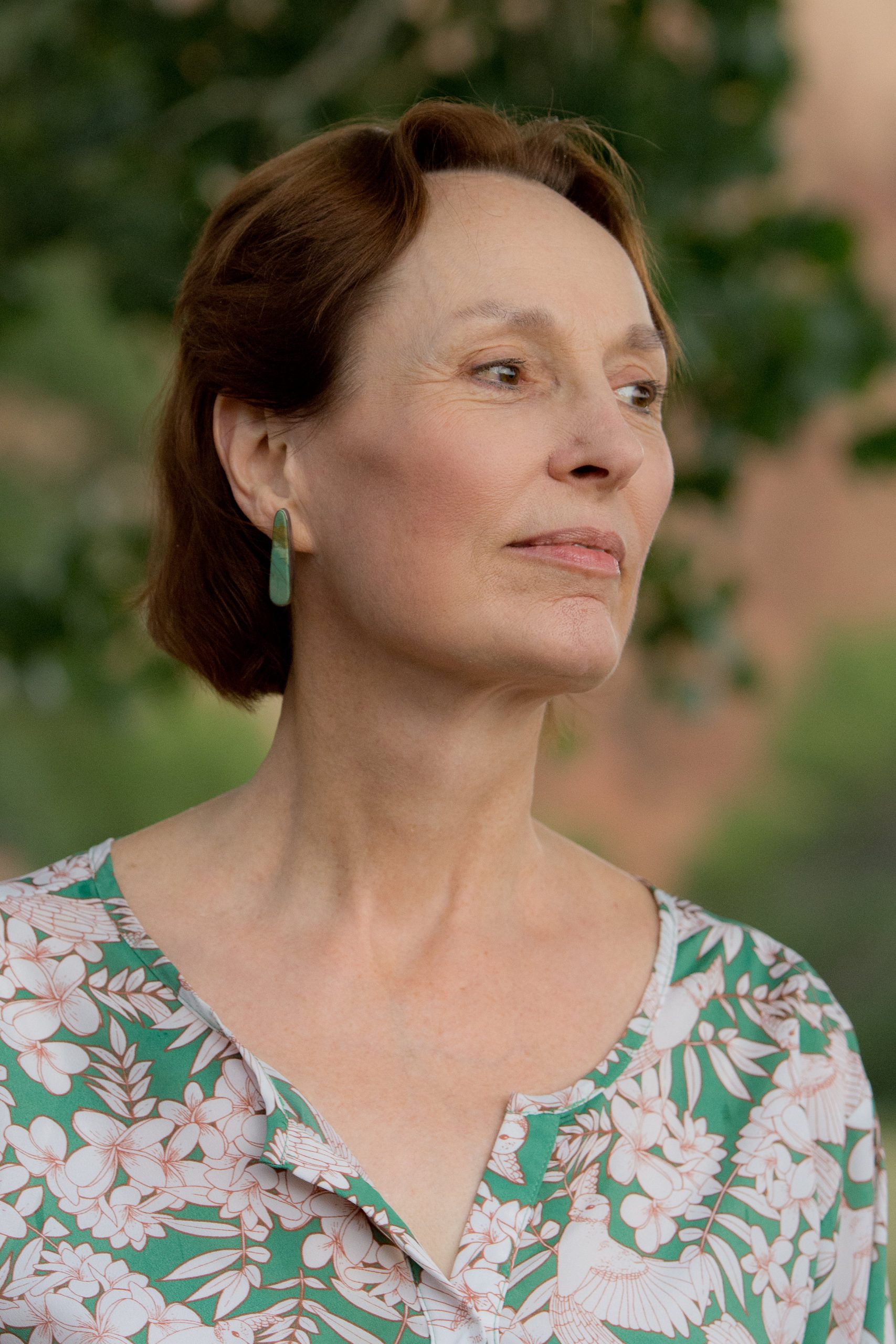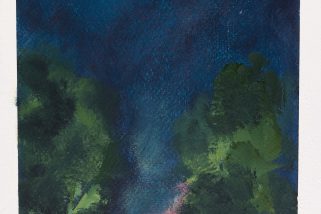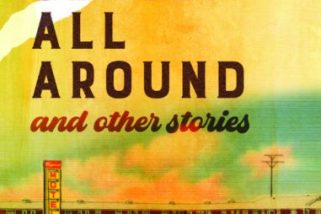
“What Woolf Dares Us to Write” by Lauren Rusk
The Inspiration of Orlando(1)
When in her diary Virginia Woolf describes herself as “writing against the current,”(2) she refers to the force of expectations, those of writers and critics—many of them her friends—who belong to the masculine literary establishment. Woolf braved this current because she wanted her work to be valued and widely read. But then if so, why did she set her course against it?
I think Woolf opposed expectation because she couldn’t do otherwise. Temperamentally she was driven by two intertwined goals. First, to enact her sense of what life is in essence, the flow of consciousness itself. And second, to make each book a fresh experiment.
Orlando was a particularly daring one. It violated the conventional understandings of gender and sexuality, of genre and narrative, and even of time. In this fantasy (which Woolf mischievously subtitled A Biography) the main character moves through the Renaissance of Queen Elizabeth all the way to the early twentieth century, growing from age 16 to 36 in the course of 340 years. The only explanation the narrator gives is that “some [people] we know to be dead, though they walk among us; some are not yet born, though they go through the forms of life; others are hundreds of years old though they call themselves thirty-six. . . . it is a difficult business—this time-keeping; nothing more quickly disorders it than contact with any of the arts” (223-24).(3)
Even more startling is the fact that Orlando changes sex partway through the book. As the ambassador to Turkey who’s just been made a duke, Orlando falls asleep for a week and then awakens to find himself: herself. Transformed. Again explanations are brushed aside. “It is enough,” the narrator says, “to state the simple fact; Orlando was a man till the age of thirty; when he became a woman and has remained so ever since” (103).
As for sexuality, the male Orlando becomes enamored of someone skating on the frozen Thames even before he knows the person’s sex. Later the female Orlando cross-dresses from time to time, befriends women of the night, and “enjoy[s] the love of both sexes equally” (161). Finally, when at last Orlando finds her soulmate—one Marmaduke Bonthrop Shelmerdine, Esquire—gender cannot contain either of them. “‘Are you positive you aren’t a man?’ he would ask anxiously, and she would echo, ‘Can it be possible you’re not a woman?’ . . . For each was so surprised at the quickness of the other’s sympathy, and it was to each such a revelation that a woman could be as tolerant and free-spoken as a man, and a man as strange and subtle as a woman, that they had to put the matter to the proof at once” (189).
Each of her experimental novels, especially one as radical as Orlando, was risky for the ambitious, anxious, and exacting Woolf. She feared that each book would fall short of what she envisioned, dreaded dismissive reviews, and craved confirmation from writers she admired. Nonetheless, never mind the odds against women, Woolf went ahead and wrote exactly what she felt like writing.
In the case of Orlando, she felt like dashing off a fantasy “at the top of my speed”(4) for a “holiday”(5) between To the Lighthouse and The Waves. She pictured the “escapade” that became Orlando as “half laughing, half serious: with great splashes of exaggeration”; “the spirit to be satiric, the structure wild”;(6) “Everything . . . tumbled in pall mall.”(7) And “Sapphism,” she said, “is to be suggested.”(8) (In fact, Woolf first imagined two women as the main characters.)(9)
A couple of years earlier, after Mrs Dalloway had come out, Woolf’s friend Lytton Strachey suggested that she try “something wilder & more fantastic, a frame work that admits of anything, like Tristram Shandy,” Laurence Sterne’s digressively satiric eighteenth-century novel. When Virginia objected, “But then I should lose touch with emotions,” Lytton said, “Yes . . . there must be reality for you to start from. Heaven knows how you’re to do it.”(10)
Six months later the emotional reality arose: Virginia and the author Vita Sackville-West became lovers. And after two more years, when Vita had moved on erotically, that reality had become complex enough for Woolf to conceive Orlando as “Vita; only with a change about from one sex to another.”(11) Thus she reframed their relationship by making Sackville-West into a character she could both dwell on adoringly and step back from critically.
Within the flexible confines of this wildly structured fantasy, Woolf could also explore, and did, any subject that came to mind—history, society, the aims of writers, and the mysteries and multiplicities of selfhood, consciousness, and time.
It is important for us as writers that Woolf’s originality didn’t arise from thin air; it was nourished by voluminous reading. The liberties she took with structure and genre in Orlando had precedents—in Sterne’s “shaggy-dog story”(12) of a novel and also in Some People by Vita’s husband, Harold Nicolson, a book that intermingles biography and fiction. The process of writing essays praising both these authors must have strengthened Woolf’s resolve to experiment with genre and narration.
Encouraged by Sterne’s example, Woolf galloped, sauntered, and digressed her way through Orlando. Toward the end, the narrator, at first a parody of conventional biographers, begins to sound more and more like Woolf herself.
Among all the anomalies, though, what I find most striking and disconcerting is the way the narrative keeps pulling the rug out from under me, confounding whatever it has just led me to expect. Orlando’s attitudes, the narrator’s opinions, and even the plot continually reverse themselves.
For one thing, there’s the matter of Orlando’s feelings about people on the fringes of society. In Turkey he feels a kinship with those who pass beneath his balcony, “fanc[ying] a certain darkness in his [own] complexion” (89-90). A cleaner sees him drawing a peasant woman up to his bedchamber by a rope. He embraces her. Then during his trance, “a deed of marriage” is discovered between Orlando and “Rosina Pepita, a dancer, father unknown, but reputed a gipsy, mother also unknown but reputed a seller of old iron in the marketplace” (98). However, when Orlando wakes as a woman and then runs away with the gipsies for a simpler life, Pepita disappears from the story. And soon thereafter Orlando finds the nomads a bit too down to earth: “‘Four hundred and seventy-six bedrooms mean nothing to them,’ sighed Orlando. ‘She prefers a sunset to a flock of goats,’ said the Gipsies” (110). Hence, our lady sails back to England. Not until centuries later, when Orlando’s legal status has been settled, does the missing wife come up again, and then only in parentheses. “Turkish marriage annulled,” Orlando announces to her lover, Shel. “Children pronounced illegitimate (they said I had three sons by Pepita, a Spanish dancer). So they don’t inherit, which is all to the good. . . .” The passage hurries on: Orlando is declared legally female; she can marry and have heirs, and plans to; the city celebrates; “Hospitals [are] founded”; and “Turkish women by the dozen [are] burnt in effigy in the marketplace, together with scores of peasant boys with the label ‘I am a base Pretender,’ lolling from their mouths” (186-87). As the love story surges to the end of the chapter, I wonder whose cavalier treatment of the underclass this is. Orlando’s? Vita’s? The novelist’s?
And then there’s the question of gender. The book begins, “ He—for there could be no doubt of his sex” (11). Woolf’s opening recalls the first words of Dickens’s A Christmas Carol: “Marley was dead: to begin with. There is no doubt whatever about that”13; each passage raises a red flag. After Orlando wakes from the seven-day sleep, we are told, again categorically, that “Orlando had become a woman—there is no denying it.” “But” (and here the claim begins to sound more like a puzzle) “in every other respect, Orlando remained precisely as he had been.” Striving to be exact, the speaker navigates slippery ground (momentarily gaining a foothold in our time): “The change of sex, though it altered their future, did nothing whatever to alter their identity” (102, italics added). Further on, though, musing over Orlando’s cross-dressing and shape-shifting, the narrator reverses course: “The difference between the sexes is, happily, one of great profundity.” And then demurs, “For here again, we come to a dilemma. Different though the sexes are, they intermix” (139), the provisional conclusion of one who claims “the immunity of all biographers and historians from any sex whatever” (161).
At some point, the reader may feel moved to cry, “Enough of this rug-pulling!” Where does the book come down, regarding gender, or class, or sexuality, or Vita, its biographical shadow-subject? It doesn’t.
As various critics have pointed out, Woolf’s lightning reversals and changes of subject were self-protective. Cloaked in bravado, camouflaged with an abundance of froth, Orlando dances back and forth like a fencer avoiding a hit. Thus Woolf maximized its reach as well as shielded its reputation, and Vita’s, in a period when Radclyffe Hall’s lesbian novel The Well of Loneliness was ruled obscene and ordered to be destroyed. “[T]he balance between truth & fantasy,” Woolf warns herself in her diary, “must be careful.”(14) Similarly, the female Orlando, also in the early nineteen-hundreds, wonders whether “the spirit of the age” will allow her to be a writer. Like Woolf and Sackville-West, “She was married,” that was in her favor; “but if one’s husband was always sailing round Cape Horn, was it marriage? If one liked him, was it marriage? If one liked other people, was it marriage? And finally, if one still wished, more than anything . . . to write poetry, was it marriage? She had her doubts.” Although she manages to write a quatrain without the pen exploding, Orlando wonders whether, “if the spirit”—like some customs officer—“had examined the contents of her mind carefully, it would not have found something highly contraband for which she would have had to pay the full fine.” Because, as the narrator observes, “the transaction between a writer and the spirit of the age is one of infinite delicacy, and upon a nice arrangement between the two the whole fortune of [one’s] works depend [sic]” (194-96).
This passage, of course, flirts with the very dangers it refers to, and caricatures them. To me, Orlando doesn’t feel like a cautious book, but rather an overridingly playful one. It seems to echo Walt Whitman as he writes, “Do I contradict myself? / Very well then . . . . I contradict myself; [. . .]”(15) But why does Woolf keep reversing herself, and our expectations, until I at least give up expecting altogether?
Her contradictions arise, I believe, from the greatest urgency. Woolf needed to reflect her experience of conscious being in all its flickering changefulness. “I am growing up,” Orlando muses, taking her candle. “‘I am losing my illusions, perhaps to acquire new ones,’ . . . . Change was incessant, and change perhaps would never cease” (129-30).
In the adventure of writing Orlando, Woolf jettisoned consistency in favor of authenticity. She let her contradictory impressions and attitudes show. Repeatedly the text delights in fairy-tale aristocratic luxuries, then briefly parodies and deconstructs them, then turns to revel in furs and skates and carriages once more. It reveals not only Orlando’s, Vita’s, and the narrator’s choices of what to dwell upon, but also the author’s. I find this troubling. And yet, isn’t it good that I’m troubled? I am disturbed, in part, by recalling my own self-indulgence and callousness. In various pieces of writing, Woolf lets snobbishness and egalitarianism sit uneasily next to one another. Is this a flaw? The fact that Woolf reveals herself to be imperfect and unresolved leaves her open to critique. But that openness also invites us in, to take up the questions she provokes and examine ourselves as we read.
The last twenty-five pages of the novel are one great gesture of opening out. All in a day, Orlando riffles back and forth through the centuries, her many selves merging and colliding in the present. The essence of life, love, and poetry that she has always sought approaches. Woolf depicts it as a wild goose, and sometimes an elusive fish. “Haunted!” Orlando cries, “ever since I was a child. There flies the wild goose. . . . past the window out to sea. . . . I’ve seen it, here—there—there—England, Persia, Italy. . . . and always I fling after it words like nets . . . which shrivel as I’ve seen nets shrivel drawn on deck with only sea-weed in them. And sometimes there’s an inch of silver—six words—in the bottom of the net. But never the great fish who lives in the coral groves” (229). On the very last page, the wild goose reappears when Shel returns from Cape Horn; then it flies up and vanishes again. This final vision is followed by an ellipsis, the three dots with which Woolf planned to end, even before she conceived the plot.(16) Planning not to conclude, she wrote an open-ended story, leaving gender, genre, honor, time, and self, ungraspable as water.
Beyond the phrase “writing against the current,” Woolf uses fluidity as a metaphor so often that water seems almost to be the medium she lives in. Her first memory, recounted in the essay “Sketch of the Past,” is of listening in bed to waves breaking on the beach at St. Ives, of “hearing this splash and seeing this light, and feeling, it is almost impossible that I should be here; of feeling the purest ecstasy I can conceive.”(17) In her diaries, Woolf wants to “get into my current of thought”(18) and “swim about in the dark green depths.”(19) For material, she “go[es] adventuring on the streams of other peoples [sic] lives—speculating, adrift[.]”(20) At other times she “toss[es] up & down on . . . awful waves” of “black despair. . . .”(21) Clearly the currents are inner as well as outer. But without such fluid indeterminacy, how could she arrive at moments of inspiration like this one, in A Room of One’s Own? “Thought . . . had let its line down into the stream. It swayed, minute after minute, hither and thither among the reflections and the weeds, letting the water lift it and sink it, until—you know the little tug—the sudden conglomeration of an idea at the end of one’s line: and then the cautious hauling of it in, and the careful laying of it out? . . . however small it was, . . . put back into the mind, it became at once very exciting, and important; and as it darted and sank, and flashed hither and thither, set up such a wash and tumult of ideas that it was impossible to sit still.”(22)
Looking ahead, Woolf aims “to saturate every atom.”(23) Orlando is just one in a series of experiments that, like The Waves, she can’t resist running right into. Thus, by example, Woolf dares us to follow our own deepest impulses, no matter how idiosyncratic they seem. Pursue them, she urges, as far as you possibly can.
What asks to be written? Is there a subject you’ve dismissed because it feels odd, or sensitive, too complicated? An image or a memory that keeps rising to the surface but seems risky for the page? Perhaps a new way of writing, one you haven’t yet tried. Dive in, why not—a ten-minute plunge—and just see what springs through your improvising hands to mind.
Notes
1 Beyond Woolf’s writings, the research of Hermione Lee, Pamela Caughie, Karen Kaivola, Nigel Nicolson, and Karyn Sproles has informed this essay.
2 Woolf, Diary, vol. 5, 22 Nov 1938, p. 189.
3 Woolf, Orlando, page numbers in the text.
4 Woolf, Diary, vol. 3 (D3), 14 Mar 1927, p. 131.
5 D3, 18 Mar 1928, p. 177.
6 D3, 20 Dec 1927, p. 168.
7 D3, 14 Mar 1927, p. 131.
8 D3, 14 Mar 1927, p. 131.
9 D3, 14 Mar 1927, p. 131.
10 D3, 18 Jun 1925, p. 32.
11 D3, 5 Oct 1927, p. 161.
12 Ricks, p. xi.
13 Dickens, p. 1.
14 D3, 22 Oct 1927, p. 162.
15 Whitman, p. 118.
16 D3, 14 Mar 1927, p. 131.
17 Woolf, Moments of Being, pp. 78-79.
18 D3, 16 Sept 1929, p. 253.
19 D3, 21 Sept 1929, p. 255.
20 D3, 20 June 1928, p. 187.
21 D3, 18 Dec 1928, p. 212.
22 Woolf, A Room of One’s Own, pp. 5-6.
23 D3, 28 Nov 1928, p. 209.
Works Cited
Caughie, Pamela L. “Virginia Woolf’s Double Discourse.” Discontented Discourses: Feminism / Textual Intervention / Psychoanalysis, edited by Marleen S. Barr and Richard Feldstein, U of Illinois P, 1989, pp. 41-53.
Dickens, Charles. A Christmas Carol. 1843. Penguin, 2012.
Kaivola, Karen. “Virginia Woolf, Vita Sackville-West, and the Question of Sexual Identity.” Woolf Studies Annual, vol. 4, 1998, pp. 18-40.
Lee, Hermione. Virginia Woolf. 1996. Vintage, 1997.
Nicolson, Nigel. Virginia Woolf. Penguin, 2000.
Ricks, Christopher. Introductory Essay, 1967. The Life and Opinions of Tristram Shandy, Gentleman, by Laurence Sterne, 1759-67, Penguin, 2003, pp. xi-xxxii.
Sproles, Karyn Z. Desiring Women: The Partnership of Virginia Woolf and Vita Sackville-West. U of Toronto P, 2006.
Whitman, Walt. Leaves of Grass. 1855. Penguin, 2017.
Woolf, Virginia. A Room of One’s Own. 1929. Harvest-Harcourt, 1989.
—. Moments of Being: Autobiographical Writings. Pimlico, 2002.
—. Orlando: A Biography. 1928. Harvest-Harcourt, 2006.
—. The Diary of Virginia Woolf. Volume 3: 1925-1930. Harvest-Harcourt, 1981.
—. The Diary of Virginia Woolf. Volume 5: 1936-1941. Harvest-Harcourt, 1985.
____________________
Share your response to this work, in any form, here

Lauren Rusk Artist Statement:
Lauren Rusk teaches creative writing at Stanford University, including its programs
in Paris, Berlin, and Oxford, and has also taught at Swarthmore College and the A
Room of Her Own Foundation’s retreat. Her books are a collection of poems, Pictures
in the Firestorm (second edition 2015) and a study of autobiographical writing, The
Life Writing of Otherness: Woolf, Baldwin, Kingston, and Winterson (2002, reprinted
2009). Her poems and essays have appeared in such publications as Hotel Amerika,
the Writer’s Chronicle, and Best New Poets, whose Open Competition she won. Her
internet address is http://stanford.edu/~rusk/






